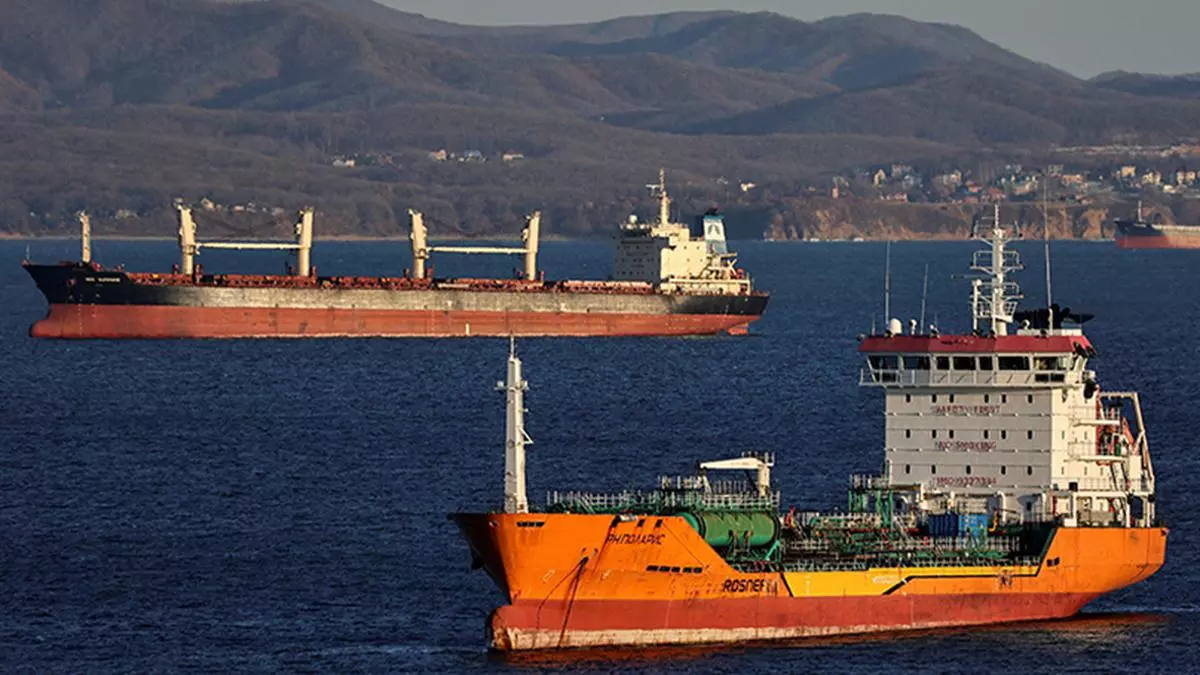
With sharp escalation in tensions in the Middle East since last weekend’s unprecedented Iranian missile attacks on Israel, the Indian government is in a huddle over what its strategy on oil imports should be and the alternatives it could explore in case of supply disruptions in West Asia and continued volatility in oil prices, sources have said.
“The Commerce Ministry is in close consultations with the Ministry of Petroleum and Natural Gas to weigh alternative supply options that could be explored if the situation in West Asia worsens. As over 40 per cent of India’s oil at present is sourced from the region, the task is not simple,” an official tracking the matter told businessline.
One option being considered is to increase purchase from Russia and see if it can be routed through the Chennai-Vladivostok route, which passes through the Sea of Japan, the South China Sea and Malacca Strait, in case the traditional route through the Red Sea cannot be used, the official said.
“India is already sourcing one-third of its oil imports from Russia. It may be possible to increase imports from Moscow in case buying from West Asian countries becomes a problem. But in that case routing it through the Red Sea would be an issue. Bringing in oil through the Chennai-Vladivostok route, for which some trials have already taken place, may be a possibility but it needs closer scrutiny and planning,” the official added.
Crude imports
India’s dependence on imported crude touched a new high of 87.7 per cent in FY24 compared to 87.4 per cent cent in the previous fiscal, according to data released by the Oil Ministry’s Petroleum Planning & Analysis Cell (PPAC). The country’s crude oil import bill, however, dropped 16 per cent in FY 24 to $132.4 billion due to a fall in global oil prices while the quantity of imports remained almost unchanged over the previous year.
Largest supplier of crude for India have been Russia (35 per cent), followed by Iraq (20 per cent), Saudi Arabia (15 per cent), UAE (6 per cent), US (3.5 per cent) and Kuwait (3 per cent).
“The US is the largest exporter of oil outside the troubled region (the Middle East and Russia) but it already has committed supplies. It sells to countries such as Mexico, China and Netherlands. India comes way down. They are often long term contracts. You can’t expect the US to start routing more oil to India overnight,” said Biswajit Dhar, former professor, JNU.
Russia’s case is different as it already has surplus oil, because of the Western sanctions against it, and could supply more to India if needed, the official said.
“The situation in the Middle East is still developing. After reports of Israel’s counter attack on Friday, things have become more tense. We are keenly watching the situation. All options will be explored so that our oil imports remain secure,” the official added.
Price volatility
Oil price volatility has increased since Iran’s attack on Israel with Brent crossing $ 90 per barrel on Friday morning before easing slightly.
Tensions in the region started rising since October 7 last year when Palestinian militant group Hamas attacked Israel, with around 1,200 dead and 250 others kidnapped. Israel responded with a devastating counter-attack on Gaza killing approximately 34,000 Palestinians.
Crime Today News | Business & Economy
Source | Powered by Yes Mom Hosting





